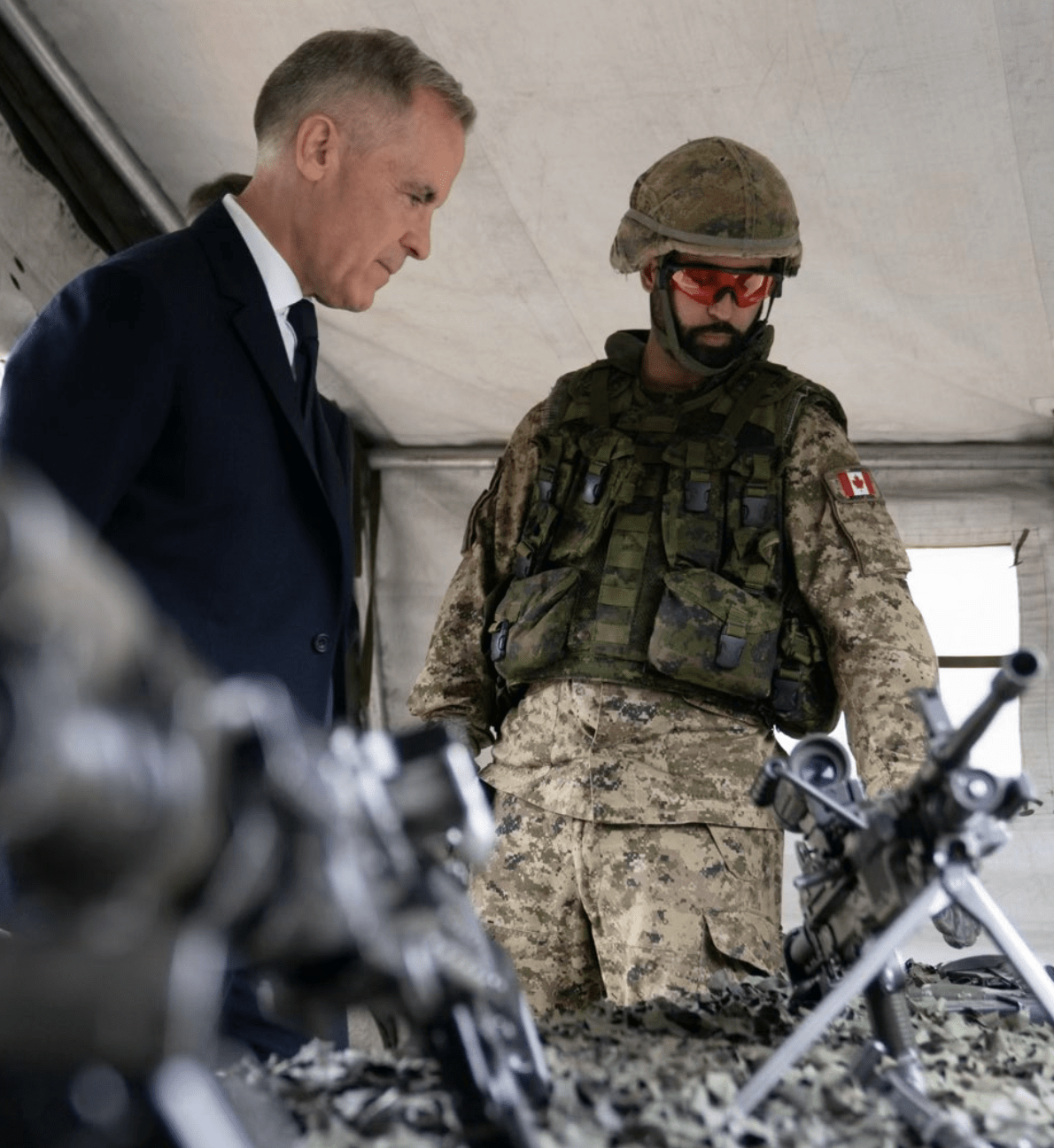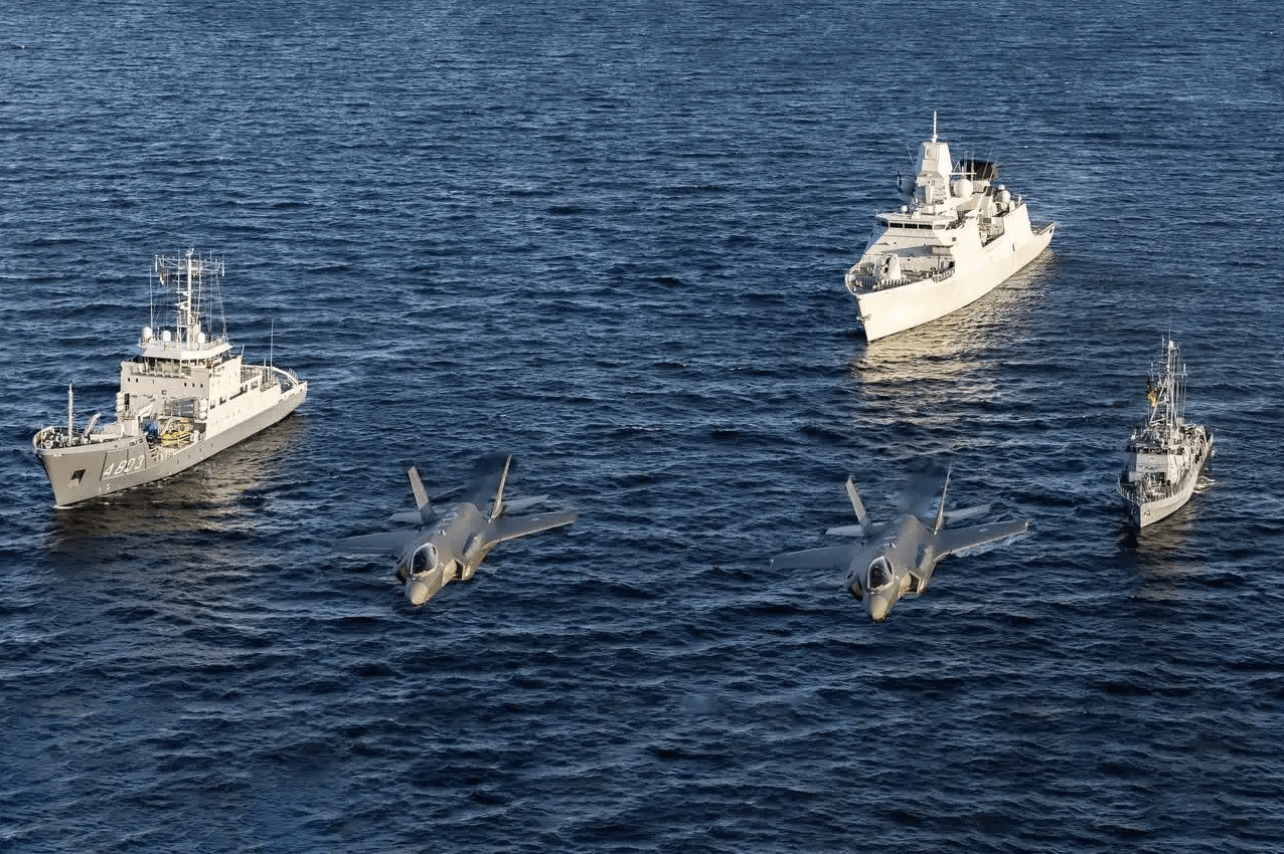Canada’s Role in the New Transatlantic Security Dynamic
 Prime Minister Mark Carney at Fort York Armoury before announcing Canada’s increase in defence spending to 2% on June 9th/PMO
Prime Minister Mark Carney at Fort York Armoury before announcing Canada’s increase in defence spending to 2% on June 9th/PMO
By Elinor Sloan
June 10, 2025
The Trump administration’s increasingly confrontational approach to NATO, and its questioning whether America remains the primary guarantor of European security, has forced members to rethink their role in, and approach to, the Alliance. This includes Canada, which maintains a strong national interest in a secure European continent and will want to respond accordingly.
The first and most challenging step is for Canada to increase its military capabilities. On June 9th, Prime Minister Mark Carney announced a significant increase in defence spending — to 2% of GDP in fiscal year 2025-26, and continued growth after that — along with plans to invest in a wide range of military equipment. Carney’s announcement comes after years of bottlenecks in the defence procurement process that meant even allocated funds could not be spent expeditiously.
Many proposals have been put forward, and attempts made, to speed up Canada’s military procurement. They range from: launching a defence procurement strategy including all four main ministries involved (Defence, Industry, Procurement and Treasury Board); to undertaking a defence procurement review to identify legislative changes and allied best practices; to creating a separate defence procurement agency.
The latter option, first raised by the Trudeau government in 2019, has just been announced again by Carney. The agency is to be overseen by the secretary of state for defence procurement. But experience indicates the core criterion for efficient defence procurement is top-down leadership from, and sustained interest by, the Prime Minister’s Office. The C-17 strategic transport aircraft were delivered in months rather than years or decades at Prime Ministerial behest, and there are other examples. Without sustained leadership from above, defence procurement will remain mired in bureaucratic red tape below.
Working with our European allies can be part of Canada’s path forward on defence procurement. The Prime Minister will be meeting with European Union leaders in Brussels on June 23, the eve of the NATO Summit at The Hague, to agree on Canada’s participation in ReArm Europe, the EU’s €800 billion plan to upgrade defence capabilities. He has said he wants to formalize that deal by July 1st.
Membership in ReArm Europe would enable Canada to direct at least some of its new procurement effort toward jointly building or buying military systems with its European allies.
Membership in ReArm Europe would enable Canada to direct at least some of its new procurement effort toward jointly building or buying military systems with its European allies. Critically, it would also help reduce Canada’s defence procurement dependence on the United States where, the Prime Minister has noted, some 75 percent of our defence dollars are spent.
To help promote European security, there are some specific areas where Canada should focus. One is strengthening its presence in Latvia. Since 2017, Canada has led a multinational battle group in Latvia to help deter further Russian aggression, and since 2022 it has been working to build the battle group up to full brigade size. Already, the force has exercised as a complete brigade, and it will continue to grow in troop strength to 2026. Britain and Germany are similarly transforming battle groups to brigades in Estonia and Lithuania, respectively.
Yet effective deterrence will require still more, particularly if the United States disengages. In addition to fast-tracking air defence systems and anti-tank weapons for its troops in Latvia, Canada will want to take a page out the Ukrainian playbook of actively supplementing its ground forces with advanced and ever-evolving drones and loitering munitions. Earlier this year, Canada placed an order for loitering munitions which, when they arrive, will enable the Canadian Army to refine its ability to integrate drones with long-range precision fires.
Canada can also undertake cooperative efforts with small groups of like-minded allies. At 32 members, NATO has become a large and inclusive alliance, which is valuable. The situation also lends itself to coalitions forming within NATO to carry out specific tasks. For Canada, a key interest lies in maritime operations in northern waters.
In the North Atlantic, it is important to keep open the sea lines of communication between North America and Europe. Russian submarines access the North Atlantic via the Norwegian Sea and through the Greenland-Iceland-UK (GIUK) gap. Canada has a longstanding anti-submarine warfare role in the North Atlantic dating to World War II, but in future it will want to work with Britain, Germany, and Norway on anti-submarine warfare missions, tracking and monitoring Russian submarines.
The idea builds on a trilateral agreement Canada signed with Germany and Norway at the 2024 NATO summit on strengthening maritime cooperation in the North Atlantic. Germany and Norway are cooperating to build and acquire a submarine, and there is potential for Canada — which is in the market for new submarines — to join the initiative. This path could be facilitated by Canada signing onto ReArm Europe.
 NATO ‘Baltic Sentry’ patrol ships are overflown by Netherlands F-35 aircraft/Royal Netherlands Navy.
NATO ‘Baltic Sentry’ patrol ships are overflown by Netherlands F-35 aircraft/Royal Netherlands Navy.
One of the biggest threats to North European nations is with respect to undersea lines of communication. An escalating pattern of damaged undersea cables in the Baltic Sea has prompted NATO to launch operation Baltic Sentry, involving frigates, maritime patrol aircraft, and naval drones watching for Russia’s “shadow fleet” of tankers and cargo ships thought to be dragging their anchors and cutting the cables.
NATO’s related Task Force X, spearheaded by Allied Command Transformation, is testing the integration of unmanned platforms and manned ships for the undersea infrastructure protection mission, in part through the application of artificial intelligence. Germany and Denmark are key players. Canada will want to contribute to Baltic Sentry and take part in the force transformation initiative.
Overall, the military requirement on Europe’s battlefields and its surrounding seas will be to adapt to the changing character of war. A common theme is the integration of unmanned technology with traditional platforms. In the maritime domain NATO countries are pursuing new naval concepts based on sea drones programmed to keep adversaries out of allied waters.
To support its anti-access strategy, NATO could follow the Ukrainian example of striking enemy vessels with unmanned drones. In the land domain, ground forces are operating on a battlefield saturated with uncrewed machines—airborne drones but also, increasingly, robotic ground vehicles. Woven together with networked sensors, digital systems, and artificial intelligence, they contend with ever-more sophisticated adversary cyber and electronic warfare capabilities.
The picture is one of “precise mass,” a concept that could also extend to the maritime domain with, for example, a large number of naval drones persistently monitoring the GIUK chokepoints in place of, or in conjunction with, frigates. Determining the precise mix of uncrewed and traditional platforms is perhaps the biggest force-planning challenge of the future.
The Trump administration’s sometimes hostile approach to NATO has been a wake-up call for all allies. It has sparked a major European rearmament initiative, prompted Canada to actively seek to join the effort, and helped bring about its own major defence funding increase. It has reminded Canada of our security interest in preventing a general war on the European continent and brought concentrated attention as to the new military requirements to do so, based on the rapidly changing character of war.
But all of this can only go so far. Sustained leadership at the highest level on the defence procurement file is the next essential step for Canada, without which the other objectives cannot be achieved.
Elinor Sloan is a Professor of International Relations in the Department of Political Science at Carleton University. She previously served as a defence analyst in the Department of National Defence. Prior to completing her PhD at Tufts University, she was a logistics officer in the Canadian Armed Forces.
